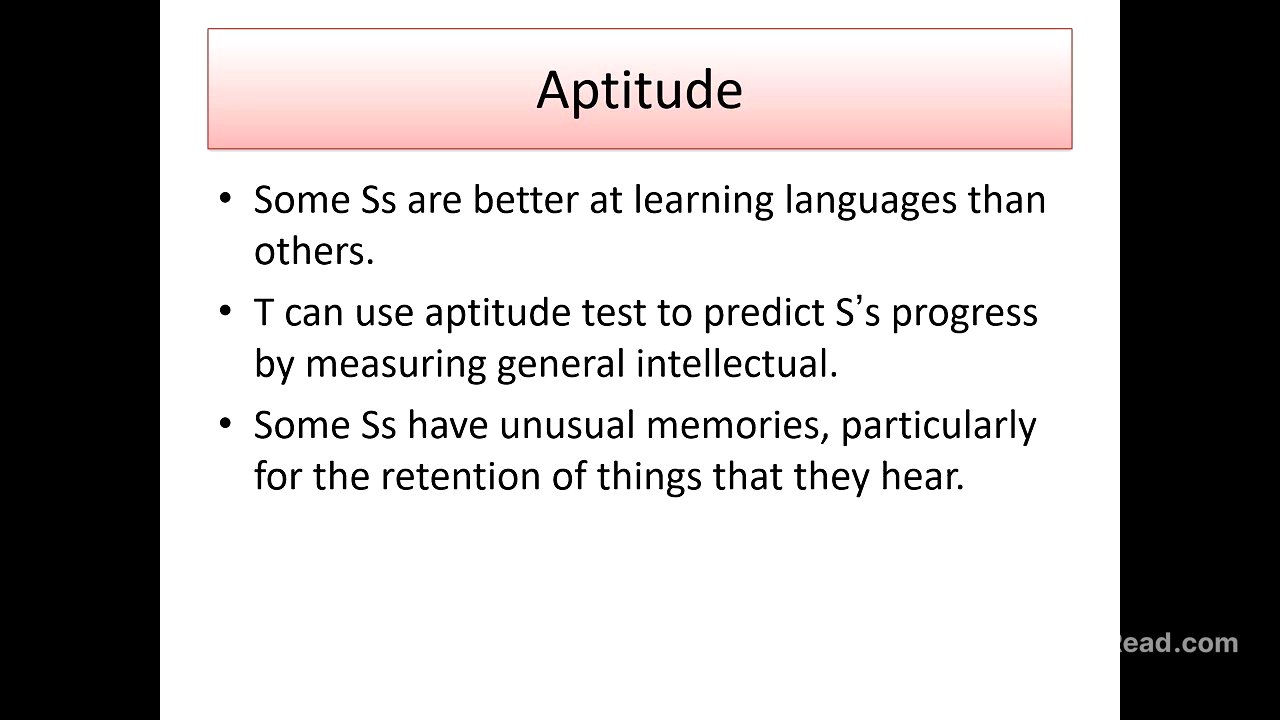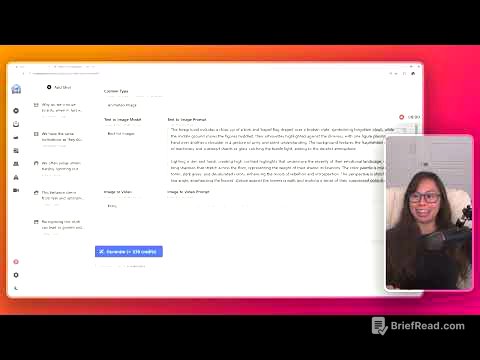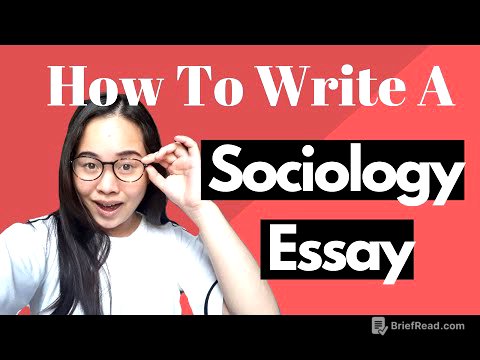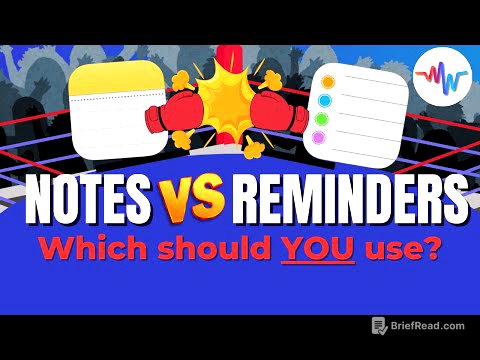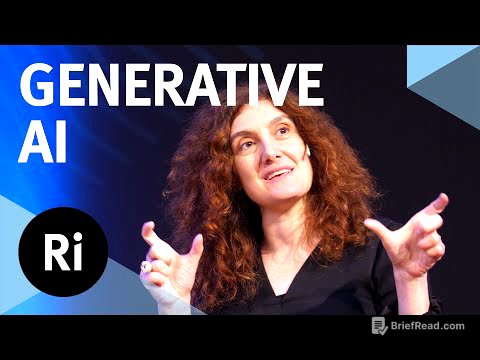TLDR;
This lecture emphasizes the importance of understanding learner characteristics for effective English as a Foreign Language (EFL) teaching. It covers various factors influencing learning, including age, aptitude, learning styles (visual, auditory, kinesthetic), multiple intelligences, and language levels. The lecture encourages teachers to adapt their methods to cater to individual differences, foster positive attitudes towards learning English, and develop their teaching skills to create engaging and effective learning environments.
- Understanding learner characteristics is crucial for effective teaching.
- Teachers should adapt their methods to cater to individual differences.
- Fostering positive attitudes towards learning English is essential.
Introduction [0:01]
The lecture introduces the topic of learner characteristics, highlighting their importance in teaching English as a Foreign Language (EFL). It emphasizes that teachers need to understand these characteristics to effectively help students achieve learning goals. The lecture will cover sources of individual differences such as age, aptitude, learning styles, multiple intelligences, language levels, and individual variations. The goal is to equip teachers with the knowledge to deal with students effectively, create interesting learning environments, and develop characteristics of good EFL learners.
Key Questions for Reflection [2:57]
Several questions are posed to guide the listener's understanding of learner characteristics. These include whether all learners share the same characteristics, the main factors affecting students' different learning styles, and the depth of knowledge EFL teachers should have about student characteristics. Additionally, teachers are encouraged to assess their own characteristics and consider what they need to enhance to become successful EFL teachers, as well as their role towards individual differences among learners.
Learner Characteristics Defined [5:15]
Learner characteristics encompass personal attributes like age, gender, academic and language level, cultural background, skills, and abilities. These characteristics influence the acquisition of information, attitudes, beliefs, behaviors, and overall achievement. EFL teachers must pay attention to these characteristics as they influence how and why students learn. Knowing these characteristics helps teachers plan and present lessons more effectively, motivating students to stay engaged throughout the lesson. Personal characteristics relate to personal information, while academic levels include learning goals and prior knowledge. Social and emotional characteristics relate to sociability and self-efficacy, and cognitive aspects include attention span, memory, and intellectual skills.
Learner Differences: Age [7:29]
The lecture discusses learner differences, focusing on age, aptitude, learning styles, multiple intelligences (MI), and language levels, as these factors significantly affect the learning and teaching process. Children, teenagers, and adults have different characteristics. Children need movement, have limited attention spans, learn through experience, and are not afraid of mistakes. Teenagers have developing concentration, begin to learn abstractly, worry about others' opinions, and become more aware of themselves. Adults can concentrate for longer periods, learn abstractly, are less willing to make mistakes, and are aware of themselves and others. Teachers must adapt their methods to suit each age group.
Learner Differences: Aptitude [13:04]
Aptitude is discussed in the context of teachers using diagnostic tests to measure students' abilities at the beginning of each year. Knowing students' aptitude towards learning English as a foreign language helps teachers meet individual differences and achieve learning objectives. Diagnostic tests help teachers understand students' levels and attitudes towards English, enabling them to tailor their teaching to meet individual needs and facilitate learning.
Learner Differences: Learning Styles [13:59]
The lecture addresses learning styles: visual, auditory, and kinesthetic. Visual learners learn best through seeing, such as watching videos or reading materials. Auditory learners learn best through hearing, preferring audio materials and recording notes. Kinesthetic learners learn best through physical experience, preferring to move around and learn by doing. Teachers should develop all three learning styles in students by varying teaching methods, activities, and teaching aids, as students may have one or more learning styles that can change over time.
Learner Differences: Multiple Intelligences [17:09]
Multiple intelligences, a theory by Gardner, includes linguistic, logical, spatial, musical, bodily-kinesthetic, interpersonal, and intrapersonal intelligences. Linguistic intelligence (word smart) can be developed through reading, writing, and talking. Logical intelligence (mathematical) involves finding relationships and asking questions. Spatial intelligence involves drawing and building. Musical intelligence involves singing and listening to music. Bodily-kinesthetic intelligence involves coordinating the mind and body through action. Interpersonal intelligence involves working with others, while intrapersonal intelligence involves working alone. The lecture notes that the next session will discuss these in detail with activities for each, and how to match them with learning styles.
Learner Differences: Language Level [23:09]
Language levels vary from beginner (kindergarten) to elementary (grades 1-4), low to mid-intermediate (grades 5-11), and advanced (grades 11-12 or university). Teachers will likely teach elementary, intermediate, and advanced students based on their specialization.
Good Learner Characteristics and Teacher's Role [24:18]
Good learners exhibit characteristics such as tolerance, positive involvement, goal orientation, and creative use of contextual clues. Teachers can add to these characteristics based on the lecture's content. Teachers should consider variations among students, appreciate their abilities by creating suitable activities, and develop activities to practice language skills and learning styles. Teachers should also develop their teaching skills, stay updated on recent trends, and create engaging activities that develop multiple intelligences and learning styles.
